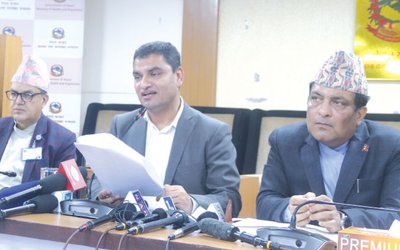Doctor Babu Ram Marasini, the director of the Department of Epidemiology and Disease Control Division ( EDCD), has recently suggested that antivenin for the treatment of deadly snakebites could potentially be made in Nepal. Over the years Nepal has been importing this life-saving antidote from India. But it seems among other reasons, apparently there are so many snakebites in India that they do not have enough to export to us this rainy season.
According to EDCD’s conservative estimates about 12000 people are bitten annually by snakes, out of which 2000 bites are predominantly due to the common deadly snakes in the Terai , a krait, cobra, or a viper. ( Unlike the Terai, Kathmandu, the mid hills, and higher areas usually do not have this variety of deadly snakes). A probable underestimation from the EDCD is that 200 victims die. Many survivors have limbs amputated and may be permanently disabled as a result.
Globally there are 5 million people who are bitten by snakes every year. Of these 94,000 die and another 400 000 have limbs amputated. Sadly it is estimated that about 50 % of these snakebite victims are in South Asia. Clearly this is a neglected tropical illness affecting the poor (especially farmers). It is heartening that Dr Marasini and his team are taking snakebite treatment for this vulnerable population very seriously.
Amazingly this antivenin which is the cornerstone of treatment in deadly snakebites is manufactured in the same way that the French physician Albert Calmett first made this in the 1890s. The venom is milked from the fangs of the deadly snake into a cup. This venom is then diluted and injected into the horse or sheep. The animal after a period of time produces antibodies which is extracted from the animals’ blood, freeze dried, stored and used in the victim as needed. Not everyone with snakebite requires antivenin.
Although when available our government administers this treatment for free, it is expensive to make. In India the serum ( antibodies) necessary for treatment may cost at least $ 325 or more. In addition antivenin may vary in their effectiveness depending on the quality of the manufacturing, storage and other related issues. Finally risks like anaphylactic shock are also potential complications of the antivenin.
Importantly, an ongoing The Million Death Study of premature mortality in India has revealed that three out of four people dying of snakebite do not make it to the hospital or a treatment center. Hence the importance of work done by Dr Sanjib Kumar Sharma and colleagues who showed that rapid transport of snakebite victims to treatment centers in a motorbike in the Terai villages of Nepal lead to a better outcome for the victims.
Besides antivenin, the World Health Organization ( WHO) has long recommended a class of drugs called anticholinestrase ( for example, neostigmine) which can reverse the paralysis caused by deadly snakes like the cobra. Two robust studies carried out in the 1980s revealed that these anticholinestrase drugs outperformed the antivenin, hence the recommendation by the WHO. But snakebite is such a neglected tropical disease that very little further research has been carried out in this area to try to consolidate the promising gains shown by the earlier studies.
Finally while we wait for the availability of the antivenin treatment, another treatment modality that Dr. Sharma highly recommends is using respiratory support like ventilators, where available, until the patient recovers. A real breakthrough however would be if we could come up with an antidote that would be inexpensive and effectively used in the field without having to transport the patient to the hospital.

Buddha Basnyat MD
Buddha Basnyat, MD, MSc, FACP, FRCP, Director of the Oxford University Clinical Research Unit-Patan Academy of Health Sciences, Kathmandu.
- Altitude Sickness
- Feb 20, 2018
- Post-earthquake Nepal: The Way Forward
- Dec 13, 2015
- The Annapurna Sanctuary
- Nov 29, 2015
- Diarrhea at the Summit
- Nov 08, 2015
- Altitude Sickness ( AMS, HAPE, HACE)
- Oct 15, 2015















